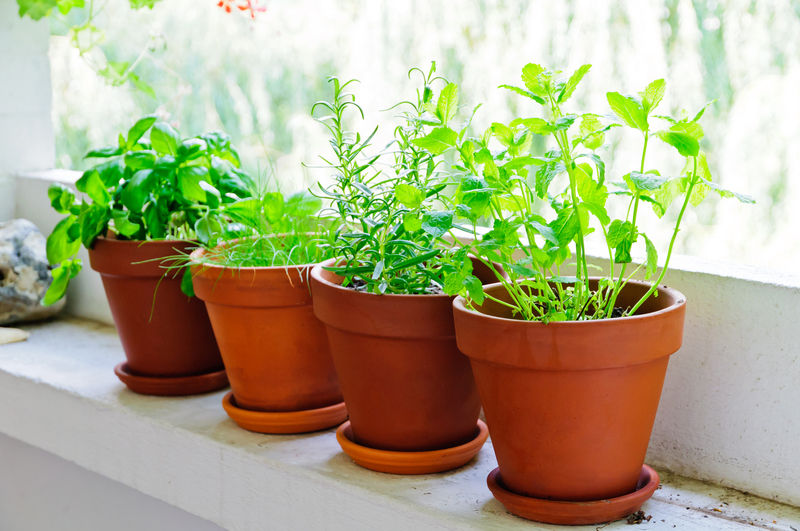Zen Garden Tips for Creating a Tranquil and Peaceful Haven
Posted on 08/09/2025
Zen Garden Tips for Creating a Tranquil and Peaceful Haven
Looking to transform your outdoor or indoor space into a serene retreat? Creating a Zen garden is an ideal way to induce calm, promote mindfulness, and foster a sense of deep tranquility. Whether you have a sprawling backyard or a small corner to spare, this comprehensive guide offers expert Zen garden tips that can help you design a peaceful haven that nurtures both mind and spirit.
Understanding the Philosophy Behind Zen Gardens
Before you dive into Zen garden ideas and practical arrangements, it's crucial to grasp the philosophical foundation underpinning these tranquil spaces. Zen gardens, also known as Japanese rock gardens or karesansui, are rooted in the principles of Zen Buddhism, emphasizing simplicity, meditation, and the beauty found in minimalism and nature.
- Minimalism and Simplicity: These gardens strip away the unnecessary, leaving only elements that invite contemplation and peace.
- Symbolism: Every rock, tree, and ripple pattern represents aspects of nature such as mountains, rivers, or lakes, inviting mindful interpretation.
- Balance and Harmony: The interplay of stone, sand, and plant matter manifests a harmonious environment, reflecting the balance desired in inner life.

Essential Elements of a Zen Garden
To create a peaceful Zen haven, it's important to combine certain key elements, each with its own symbolic significance. Here is a breakdown of the vital components:
Rocks and Stones
- Symbolize: Mountains and islands, representing strength and endurance.
- Tip: Use stones of varying sizes and textures for visual interest. Group rocks in odd numbers, commonly three or five, to maintain aesthetic balance.
Gravel or Sand
- Symbolize: Water, such as rivers or seas. Raked patterns mimic the gentle flow of water.
- Tip: Choose pale gravel or white sand for a calming, reflective quality. Use a rake to create flowing or circular patterns, inspiring tranquility and focus.
Plants
- Symbolize: Life and growth, yet should be used sparingly in true Zen gardens.
- Tip: Select evergreen shrubs, moss, bamboo, or low-care perennials that maintain their shape year-round. Prune regularly for a neat, meditative effect.
Water Features
- Symbolize: The presence of life and flow. Although not always present in dry gardens, small ponds, trickling fountains, or stone basins can enhance peace.
- Tip: Opt for subtle, understated water features to maintain the garden's minimalist nature.
Bridges and Pathways
- Symbolize: The journey through life, transitions, and reflection.
- Tip: Use stepping stones or bamboo pathways to guide movement and evoke a walking meditation practice.
Strategic Zen Garden Design Tips
Building a tranquil Zen garden involves thoughtful planning. Here are vital Zen garden design tips to foster a serene and peaceful ambiance:
1. Start with a Clear Plan
- Sketch your area--whether it's a vast outdoor yard or a compact balcony.
- Decide which elements are most important for your personal sense of peace.
- Consider the sun's movement, wind patterns, and privacy factors.
2. Prioritize Minimalism
- Limit the number of elements to avoid visual clutter and distraction.
- Invest in quality over quantity, choosing a few beautiful rocks or one striking plant.
3. Use Asymmetry and Natural Arrangements
- Place objects slightly off-center and in uneven numbers, reflecting the organic nature of landscapes.
- Let the space feel spontaneous, not rigid or overly planned.
4. Choose Calming Colors and Textures
- Opt for soothing natural tones--grays, greens, beiges, and browns. Avoid bright or artificial colors.
- Blend textures by pairing rugged rocks with soft moss or smooth gravel.
5. Incorporate Meditative Zones
- Create a dedicated space for meditation or mindfulness with a simple bench or flat rock.
- Ensure this area offers shelter from wind and excess noise, using fencing or plants as a screen if needed.
6. Engage All the Senses
- Install a water feature for gentle sound.
- Choose fragrant plants, such as lavender or jasmine, for scent.
- Select surfaces that are pleasing to the touch underfoot or by hand.
Step-by-Step Guide to Building Your Zen Garden
Ready to bring your Zen sanctuary to life? Here's a detailed, actionable guide to constructing your tranquil retreat:
- Define the Area: Use ropes or garden hoses to outline the shape before planting or placing materials.
- Prepare the Ground: Remove weeds, level the soil, and lay a weed barrier to prevent unwanted growth.
- Install Hardscape Elements: Place large stones, stepping paths, and water features first, as these are the anchors of the design.
- Add Gravel or Sand: Pour gravel or sand evenly, smoothing it out for a uniform look. Use a rake to draw patterns slowly and mindfully.
- Incorporate Plants: Tuck in small, easy-care greenery with attention to spacing and symmetry.
- Place Benches or Meditation Stones: Establish a focal point for sitting and reflection, away from the main path for privacy.
- Finalize with Accessories: Consider stone lanterns, bamboo fences, or subtle lighting to encourage evening relaxation.
Maintenance Tips for Lasting Zen Tranquility
A Zen garden is not just a static work of art--it's a living practice. Here are practical steps for ongoing care:
- Daily Mindfulness: Spend a few quiet moments each day enjoying your haven and maintaining its order.
- Rake Patterns Regularly: Use a wooden rake to refresh patterns in the sand or gravel, turning this into a meditative exercise.
- Prune Plants: Trim shrubs to maintain their shape and remove fallen leaves for a tidy look.
- Clean Water Features: Change water and clean basins to prevent algae and maintain clarity.
Adapting Zen Gardens for Small Spaces and Indoors
Don't have a yard? You can still cultivate a peaceful Zen-inspired garden indoors or on a balcony. Here's how:
Mini Zen Gardens for Desks and Shelves
- Use a shallow tray, fine sand or gravel, and a few small rocks.
- Include a tiny rake for drawing patterns--perfect for a moment of mindful relaxation during work or study breaks.
Balcony or Patio Zen Havens
- Combine container plants (like dwarf bamboo or moss) with small pebbles and a tabletop water feature.
- Add a meditation cushion or simple chair for an instant relaxation nook.
Indoor Water and Sand Features
- Install a mini indoor fountain. The trickle of water brings calm to apartments or homes without outdoor space.
- Glass bowls or terrariums with gravel, a few rocks, and low-care succulents emulate the Zen style beautifully.
Creative Zen Garden Decorating Tips
Want to personalize your Zen garden design? Here are a few decorating ideas that still honor simplicity and mindfulness:
- Stone Lanterns: Add a traditional Japanese stone lantern near a gateway or by your meditation seat.
- Bamboo Features: Fences, screens, or water spouts contribute authenticity and gentle sound.
- Engraved Stones: Inscribe simple words like peace, serenity, or gratitude.
- Subtle Lighting: Use solar lanterns or low-voltage string lights to enjoy your haven at dusk without harsh glare.
Benefits of a Zen-Inspired Peaceful Haven
A Zen garden sanctuary offers more than just visual appeal. Here are the top holistic rewards:
- Reduces Stress: The minimalist beauty and flowing design cue your mind and body to relax and let go.
- Enhances Mindfulness: Gardening, raking, or simply sitting in your Zen garden brings attention to the present moment.
- Improves Focus and Creativity: Quiet time spent in natural settings is proven to boost concentration and problem-solving skills.
- Encourages Connection with Nature: Even small garden spaces foster a sense of harmony between humans and the outdoors.
- Year-Round Beauty: With the right plant and rock selection, your Zen-inspired haven offers tranquility in every season.

Common Mistakes to Avoid When Designing Your Zen Garden
Although Zen garden tips focus on freedom and personal expression, it's easy to fall into some common traps. Avoid these pitfalls to keep your sanctuary peaceful and harmonious:
- Overcrowding: Too many features or plants can disrupt tranquility. Remember, less is more.
- Neglecting Maintenance: Allowing weeds, debris, or untended water features can diminish peacefulness and visual appeal.
- Using Artificial Elements: Plastic accessories or unnatural colors clash with the grounded, earthy essence of a Zen design.
- Symmetrical Plantings: Zen landscapes favor asymmetric, natural groupings rather than mirrored layouts.
- Ignoring Scent and Sound: True tranquility comes from a space that soothes all senses, not just sight.
Conclusion: Your Tranquil Zen Garden Awaits
Building a Zen garden - whether a simple desktop arrangement or a lush backyard retreat - is an invitation to bring peace, clarity, and beauty into your everyday life. By following these Zen garden tips for creating a tranquil and peaceful haven, you'll craft a space that encourages mindfulness, self-care, and inner harmony.
Embrace the journey, refine your sanctuary season by season, and let your Zen haven become a lifelong source of serenity and inspiration.

